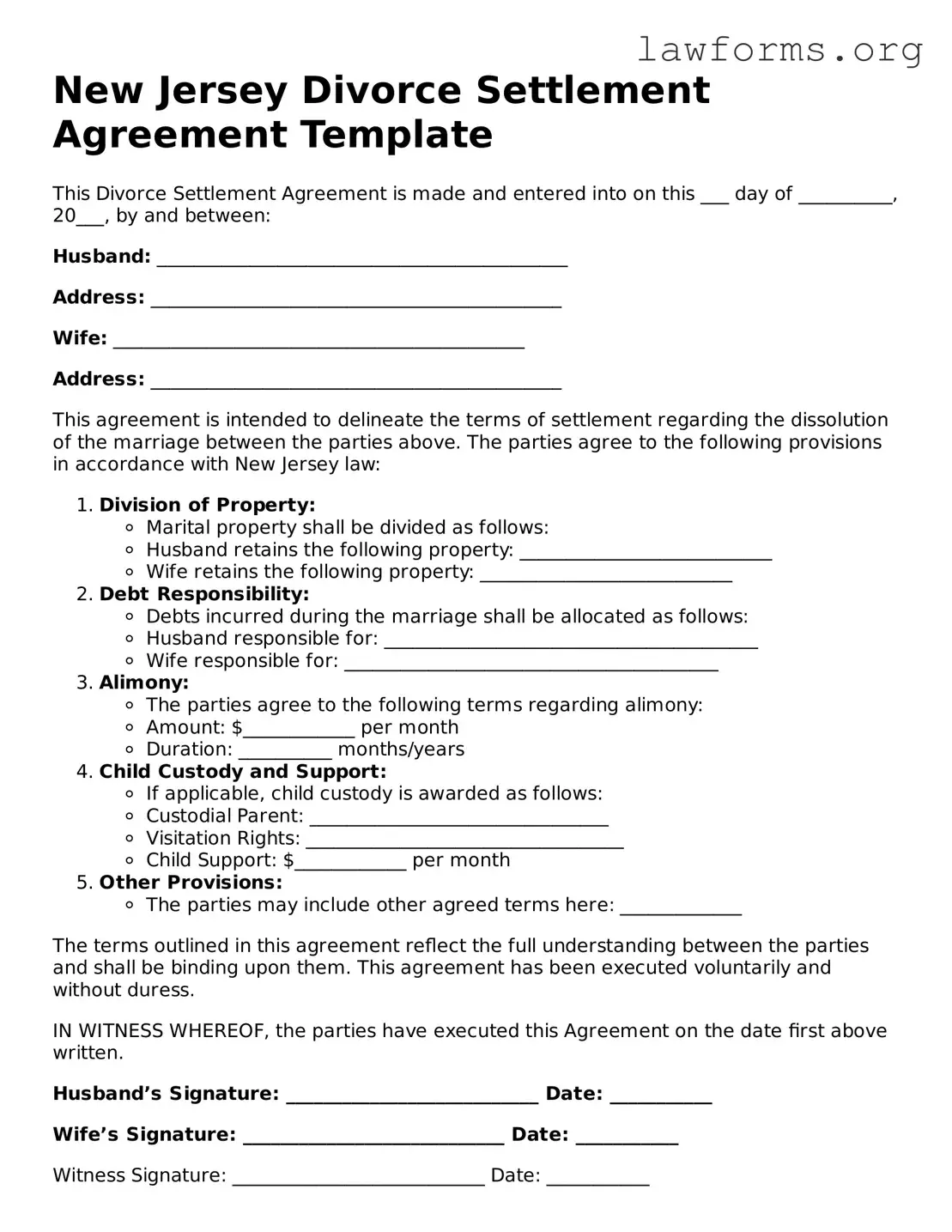New Jersey Divorce Settlement Agreement Template
This Divorce Settlement Agreement is made and entered into on this ___ day of __________, 20___, by and between:
Husband: ____________________________________________
Address: ____________________________________________
Wife: ____________________________________________
Address: ____________________________________________
This agreement is intended to delineate the terms of settlement regarding the dissolution of the marriage between the parties above. The parties agree to the following provisions in accordance with New Jersey law:
- Division of Property:
- Marital property shall be divided as follows:
- Husband retains the following property: ___________________________
- Wife retains the following property: ___________________________
- Debt Responsibility:
- Debts incurred during the marriage shall be allocated as follows:
- Husband responsible for: ________________________________________
- Wife responsible for: ________________________________________
- Alimony:
- The parties agree to the following terms regarding alimony:
- Amount: $____________ per month
- Duration: __________ months/years
- Child Custody and Support:
- If applicable, child custody is awarded as follows:
- Custodial Parent: ________________________________
- Visitation Rights: __________________________________
- Child Support: $____________ per month
- Other Provisions:
- The parties may include other agreed terms here: _____________
The terms outlined in this agreement reflect the full understanding between the parties and shall be binding upon them. This agreement has been executed voluntarily and without duress.
IN WITNESS WHEREOF, the parties have executed this Agreement on the date first above written.
Husband’s Signature: ___________________________ Date: ___________
Wife’s Signature: ____________________________ Date: ___________
Witness Signature: ___________________________ Date: ___________
